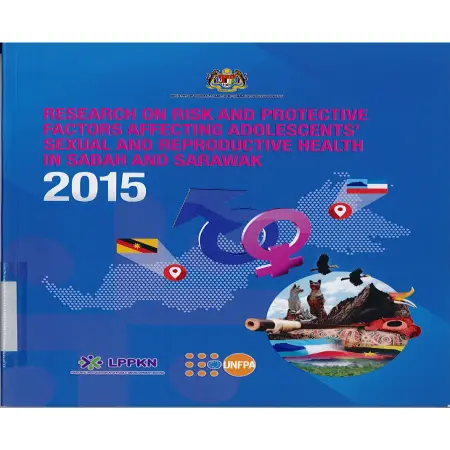| Abstract |
A quarter of the world population (1.8 billion) consists of people aged 10-24 years (UN DESA, 2009). Adolescents is a phase of life whereby they have opportunities for developing healthy behaviours, which can determine the future pattern of adulth health. However, for most adolescents, this is the phase of self-discovery whereby they undergo biological, psychological, social and economic changes in their life. Curiosity and experimentation are normal among them where certain behaviours would place adolescents at risk of undesired consequences of their activity.
There are various biological, social, educational and psychological risk factors that predispose adolescents to unhealthy and unsafe sexual phenomena such as premarital sex, having multiple sexual partners, unwanted pregnancy, early childbearing and illegal abortion. In terms of biological factors, early menarche, being male men and older age were found to be the significant risk factors. In addition, social factors including unemployment, peer influence (peer/ friends who have had sexual experience) and use of the substance such as alcohol, tend to increase the tendency of unsafe and unhealthy sexual practices (WHO, 2004). Besides, lack of sexual reproductive health information and skills in negotiating sexual relationship, inaccessibility of youth-friendly SRH services are other risk factors that had been identified (Low, 2006).
Although there is limited data on teenage pregnancy in Malaysia, the increasing reports on incidences of abandoned babies indicate that increased premarital sexual intercourse resulted in unwanted pregnancies among unmarried adolescents. From 2005 to March 2014, it was reported that there were 561 cases of baby dumping (RMP, 2014; Mansoor, 2014). the number of reports of abortion indicates that there is an increase in the number of extramarital sex among unmarried adolescents. Many 51 cases of infant abandonment were reported in 2005 to March 2014 (PDRM, 2014; Mansoor, 2014).
In 2012, a study was conducted to identify the risk and protective factors of adolescents in Peninsular Malaysia (NPFDB, 2015). There has been a dearth of studies on adolescents’ SRH in Sabah and Sarawak. Therefore, studies on SRH among this sub-population are warranted. Furthermore, there are differences in terms of demographic characteristics compared to Peninsular Malaysia. Based on these findings, more specific educational and intervention programmes tailored to the needs of the adolescents in Sabah and Sarawak need to be planned and implemented in order to prevent them from engaging in risky sexual behaviours. The objective of this study was to determine the risk and protective factors related to sexual and reproductive health (SRH) of adolescents in Sabah and Sarawak. |





